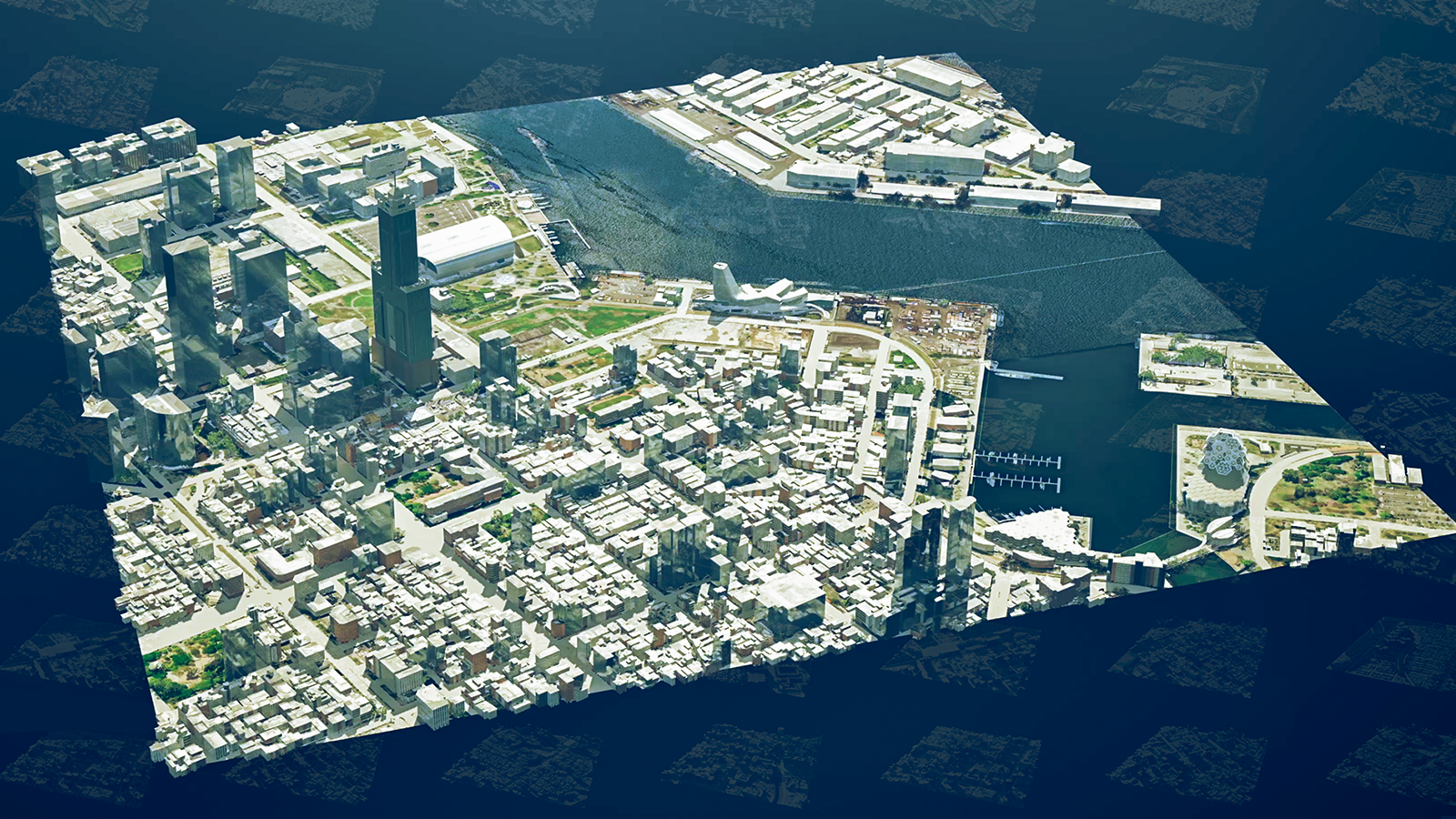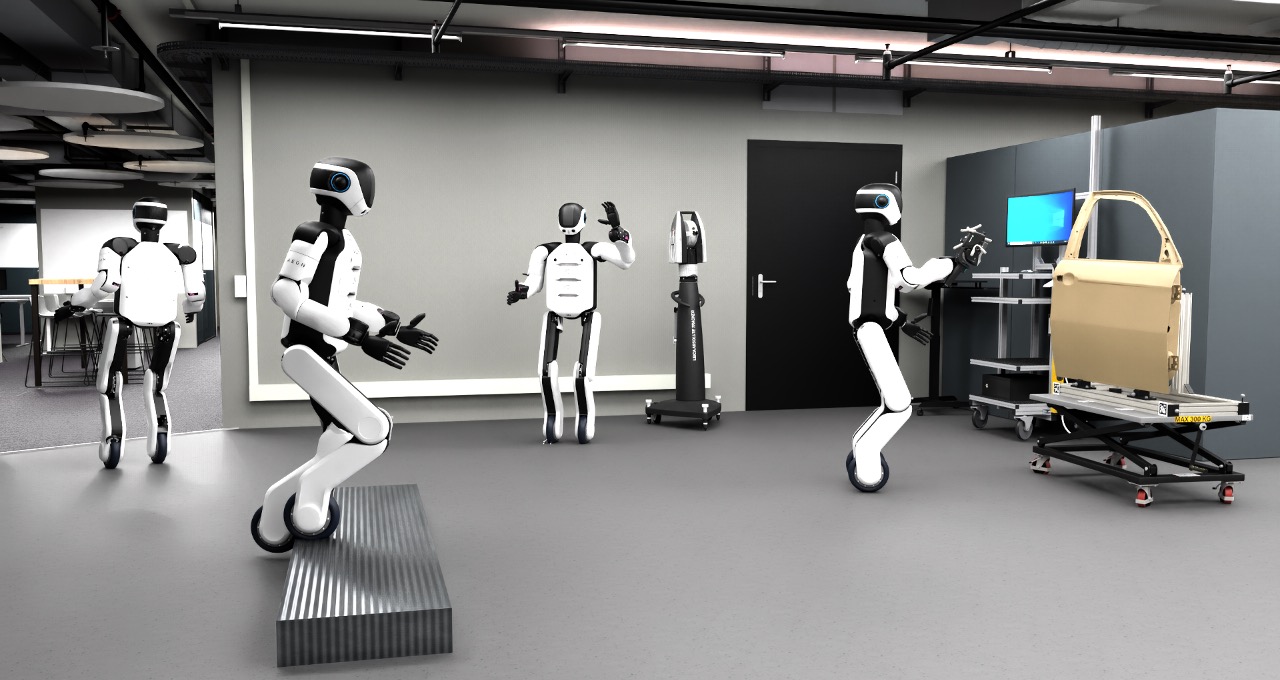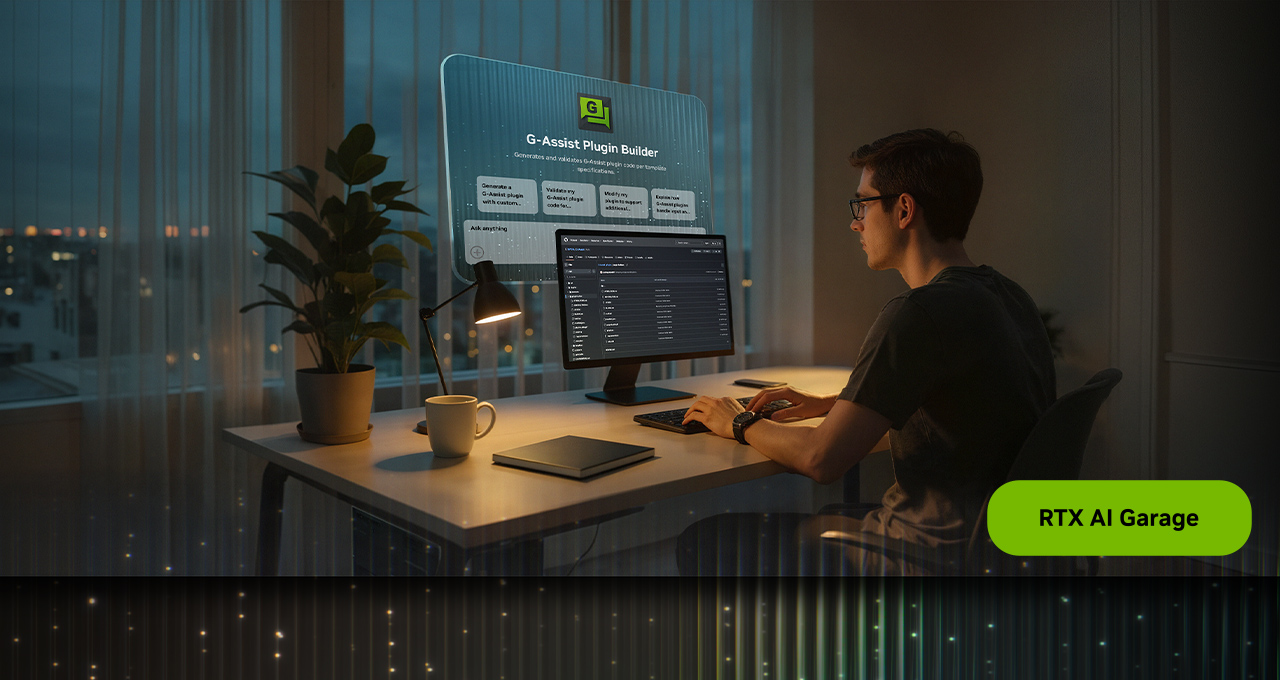Retail Reboot: Major Global Brands Transform End-to-End Operations With NVIDIA
AI is packing and shipping efficiency for the retail and consumer packaged goodsindustries, with a majority of surveyed companies in the space reporting the technology is increasing revenue and reducing operational costs.
Global brands are reimagining every facet of their businesses with AI, from how products are designed and manufactured to how they’re marketed, shipped and experienced in-store and online.
At NVIDIA GTC Paris at VivaTech, industry leaders including L’Oréal, LVMH and Nestlé shared how they’re using tools like AI agents and physical AI — powered by NVIDIA AI and simulation technologies — across every step of the product lifecycle to enhance operations and experiences for partners, customers and employees.
3D Digital Twins and AI Transform Marketing, Advertising and Product Design
The meeting of generative AI and 3D product digital twins results in unlimited creative potential.
Nestlé, the world’s largest food and beverage company, today announced a collaboration with NVIDIA and Accenture to launch a new, AI-powered in-house service that will create high-quality product content at scale for e-commerce and digital media channels.
The new content service, based on digital twins powered by the NVIDIA Omniverse platform, creates exact 3D virtual replicas of physical products. Product packaging can be adjusted or localized digitally, enabling seamless integration into various environments, such as seasonal campaigns or channel-specific formats. This means that new creative content can be generated without having to constantly reshoot from scratch.
Image courtesy of Nestlé
The service is developed in partnership with Accenture Song, using Accenture AI Refinery built on NVIDIA Omniverse for advanced digital twin creation. It uses NVIDIA AI Enterprise for generative AI, hosted on Microsoft Azure for robust cloud infrastructure.
Nestlé already has a baseline of 4,000 3D digital products — mainly for global brands — with the ambition to convert a total of 10,000 products into digital twins in the next two years across global and local brands.
LVMH, the world’s leading luxury goods company, home to 75 distinguished maisons, is bringing 3D digital twins to its content production processes through its wine and spirits division, Moët Hennessy.
The group partnered with content configuration engine Grip to develop a solution using the NVIDIA Omniverse platform, which enables the creation of 3D digital twins that power content variation production. With Grip’s solution, Moët Hennessy teams can quickly generate digital marketing assets and experiences to promote luxury products at scale.
The initiative, led by Capucine Lafarge and Chloé Fournier, has been recognized by LVMH as a leading approach to scaling content creation.
Image courtesy of Grip
L’Oréal Gives Marketing and Online Shopping an AI Makeover
Innovation starts at the drawing board. Today, that board is digital — and it’s powered by AI.
L’Oréal Groupe, the world’s leading beauty player, announced its collaboration with NVIDIA today. Through this collaboration, L’Oréal and its partner ecosystem will leverage the NVIDIA AI Enterprise platform to transform its consumer beauty experiences, marketing and advertising content pipelines.
“AI doesn’t think with the same constraints as a human being. That opens new avenues for creativity,” said Anne Machet, global head of content and entertainment at L’Oréal. “Generative AI enables our teams and partner agencies to explore creative possibilities.”
CreAItech, L’Oréal’s generative AI content platform, is augmenting the creativity of marketing and content teams. Combining a modular ecosystem of models, expertise, technologies and partners — including NVIDIA — CreAltech empowers marketers to generate thousands of unique, on-brand images, videos and lines of text for diverse platforms and global audiences.
The solution empowers L’Oréal’s marketing teams to quickly iterate on campaigns that improve consumer engagement across social media, e-commerce content and influencer marketing — driving higher conversion rates.
Noli.com, the first AI-powered multi-brand marketplace startup founded and backed by the L’Oréal Groupe, is reinventing how people discover and shop for beauty products.
Noli’s AI Beauty Matchmaker experience uses L’Oréal Groupe’s century-long expertise in beauty, including its extensive knowledge of beauty science, beauty tech and consumer insights, built from over 1 million skin data points and analysis of thousands of product formulations. It gives users a BeautyDNA profile with expert-level guidance and personalized product recommendations for skincare and haircare.
“Beauty shoppers are often overwhelmed by choice and struggling to find the products that are right for them,” said Amos Susskind, founder and CEO of Noli. “By applying the latest AI models accelerated by NVIDIA and Accenture to the unparalleled knowledge base and expertise of the L’Oréal Groupe, we can provide hyper-personalized, explainable recommendations to our users.”
The Accenture AI Refinery, powered by NVIDIA AI Enterprise, will provide the platform for Noli to experiment and scale. Noli’s new agent models will use NVIDIA NIM and NVIDIA NeMo microservices, including NeMo Retriever, running on Microsoft Azure.
Rapid Innovation With the NVIDIA Partner Ecosystem
NVIDIA’s ecosystem of solution provider partners empowers retail and CPG companies to innovate faster, personalize customer experiences, and optimize operations with NVIDIA accelerated computing and AI.
Global digital agency Monks is reshaping the landscape of AI-driven marketing, creative production and enterprise transformation. At the heart of their innovation lies the Monks.Flow platform that enhances both the speed and sophistication of creative workflows through NVIDIA Omniverse, NVIDIA NIM microservices and Triton Inference Server for lightning-fast inference.
AI image solutions provider Bria is helping retail giants like Lidl and L’Oreal to enhance marketing asset creation. Bria AI transforms static product images into compelling, dynamic advertisements that can be quickly scaled for use across any marketing need.
The company’s generative AI platform uses NVIDIA Triton Inference Server software and the NVIDIA TensorRT software development kit for accelerated inference, as well as NVIDIA NIM and NeMo microservices for quick image generation at scale.
Physical AI Brings Acceleration to Supply Chain and Logistics
AI’s impact extends far beyond the digital world. Physical AI-powered warehousing robots, for example, are helping maximize efficiency in retail supply chain operations. Four in five retail companies have reported that AI has helped reduce supply chain operational costs, with 25% reporting cost reductions of at least 10%.
Technology providers Lyric, KoiReader Technologies and Exotec are tackling the challenges of integrating AI into complex warehouse environments.
Lyric is using the NVIDIA cuOpt GPU-accelerated solver for warehouse network planning and route optimization, and is collaborating with NVIDIA to apply the technology to broader supply chain decision-making problems. KoiReader Technologies is tapping the NVIDIA Metropolis stack for its computer vision solutions within logistics, supply chain and manufacturing environments using the KoiVision Platform. And Exotec is using NVIDIA CUDA libraries and the NVIDIA JetPack software development kit for embedded robotic systems in warehouse and distribution centers.
From real-time robotics orchestration to predictive maintenance, these solutions are delivering impact on uptime, throughput and cost savings for supply chain operations.
Learn more by joining a follow-up discussion on digital twins and AI-powered creativity with Microsoft, Nestlé, Accenture and NVIDIA at Cannes Lions on Monday, June 16.
Watch the NVIDIA GTC Paris keynote from NVIDIA founder and CEO Jensen Huang at VivaTech, and explore GTC Paris sessions.
#retail #reboot #major #global #brandsRetail Reboot: Major Global Brands Transform End-to-End Operations With NVIDIA
AI is packing and shipping efficiency for the retail and consumer packaged goodsindustries, with a majority of surveyed companies in the space reporting the technology is increasing revenue and reducing operational costs.
Global brands are reimagining every facet of their businesses with AI, from how products are designed and manufactured to how they’re marketed, shipped and experienced in-store and online.
At NVIDIA GTC Paris at VivaTech, industry leaders including L’Oréal, LVMH and Nestlé shared how they’re using tools like AI agents and physical AI — powered by NVIDIA AI and simulation technologies — across every step of the product lifecycle to enhance operations and experiences for partners, customers and employees.
3D Digital Twins and AI Transform Marketing, Advertising and Product Design
The meeting of generative AI and 3D product digital twins results in unlimited creative potential.
Nestlé, the world’s largest food and beverage company, today announced a collaboration with NVIDIA and Accenture to launch a new, AI-powered in-house service that will create high-quality product content at scale for e-commerce and digital media channels.
The new content service, based on digital twins powered by the NVIDIA Omniverse platform, creates exact 3D virtual replicas of physical products. Product packaging can be adjusted or localized digitally, enabling seamless integration into various environments, such as seasonal campaigns or channel-specific formats. This means that new creative content can be generated without having to constantly reshoot from scratch.
Image courtesy of Nestlé
The service is developed in partnership with Accenture Song, using Accenture AI Refinery built on NVIDIA Omniverse for advanced digital twin creation. It uses NVIDIA AI Enterprise for generative AI, hosted on Microsoft Azure for robust cloud infrastructure.
Nestlé already has a baseline of 4,000 3D digital products — mainly for global brands — with the ambition to convert a total of 10,000 products into digital twins in the next two years across global and local brands.
LVMH, the world’s leading luxury goods company, home to 75 distinguished maisons, is bringing 3D digital twins to its content production processes through its wine and spirits division, Moët Hennessy.
The group partnered with content configuration engine Grip to develop a solution using the NVIDIA Omniverse platform, which enables the creation of 3D digital twins that power content variation production. With Grip’s solution, Moët Hennessy teams can quickly generate digital marketing assets and experiences to promote luxury products at scale.
The initiative, led by Capucine Lafarge and Chloé Fournier, has been recognized by LVMH as a leading approach to scaling content creation.
Image courtesy of Grip
L’Oréal Gives Marketing and Online Shopping an AI Makeover
Innovation starts at the drawing board. Today, that board is digital — and it’s powered by AI.
L’Oréal Groupe, the world’s leading beauty player, announced its collaboration with NVIDIA today. Through this collaboration, L’Oréal and its partner ecosystem will leverage the NVIDIA AI Enterprise platform to transform its consumer beauty experiences, marketing and advertising content pipelines.
“AI doesn’t think with the same constraints as a human being. That opens new avenues for creativity,” said Anne Machet, global head of content and entertainment at L’Oréal. “Generative AI enables our teams and partner agencies to explore creative possibilities.”
CreAItech, L’Oréal’s generative AI content platform, is augmenting the creativity of marketing and content teams. Combining a modular ecosystem of models, expertise, technologies and partners — including NVIDIA — CreAltech empowers marketers to generate thousands of unique, on-brand images, videos and lines of text for diverse platforms and global audiences.
The solution empowers L’Oréal’s marketing teams to quickly iterate on campaigns that improve consumer engagement across social media, e-commerce content and influencer marketing — driving higher conversion rates.
Noli.com, the first AI-powered multi-brand marketplace startup founded and backed by the L’Oréal Groupe, is reinventing how people discover and shop for beauty products.
Noli’s AI Beauty Matchmaker experience uses L’Oréal Groupe’s century-long expertise in beauty, including its extensive knowledge of beauty science, beauty tech and consumer insights, built from over 1 million skin data points and analysis of thousands of product formulations. It gives users a BeautyDNA profile with expert-level guidance and personalized product recommendations for skincare and haircare.
“Beauty shoppers are often overwhelmed by choice and struggling to find the products that are right for them,” said Amos Susskind, founder and CEO of Noli. “By applying the latest AI models accelerated by NVIDIA and Accenture to the unparalleled knowledge base and expertise of the L’Oréal Groupe, we can provide hyper-personalized, explainable recommendations to our users.”
The Accenture AI Refinery, powered by NVIDIA AI Enterprise, will provide the platform for Noli to experiment and scale. Noli’s new agent models will use NVIDIA NIM and NVIDIA NeMo microservices, including NeMo Retriever, running on Microsoft Azure.
Rapid Innovation With the NVIDIA Partner Ecosystem
NVIDIA’s ecosystem of solution provider partners empowers retail and CPG companies to innovate faster, personalize customer experiences, and optimize operations with NVIDIA accelerated computing and AI.
Global digital agency Monks is reshaping the landscape of AI-driven marketing, creative production and enterprise transformation. At the heart of their innovation lies the Monks.Flow platform that enhances both the speed and sophistication of creative workflows through NVIDIA Omniverse, NVIDIA NIM microservices and Triton Inference Server for lightning-fast inference.
AI image solutions provider Bria is helping retail giants like Lidl and L’Oreal to enhance marketing asset creation. Bria AI transforms static product images into compelling, dynamic advertisements that can be quickly scaled for use across any marketing need.
The company’s generative AI platform uses NVIDIA Triton Inference Server software and the NVIDIA TensorRT software development kit for accelerated inference, as well as NVIDIA NIM and NeMo microservices for quick image generation at scale.
Physical AI Brings Acceleration to Supply Chain and Logistics
AI’s impact extends far beyond the digital world. Physical AI-powered warehousing robots, for example, are helping maximize efficiency in retail supply chain operations. Four in five retail companies have reported that AI has helped reduce supply chain operational costs, with 25% reporting cost reductions of at least 10%.
Technology providers Lyric, KoiReader Technologies and Exotec are tackling the challenges of integrating AI into complex warehouse environments.
Lyric is using the NVIDIA cuOpt GPU-accelerated solver for warehouse network planning and route optimization, and is collaborating with NVIDIA to apply the technology to broader supply chain decision-making problems. KoiReader Technologies is tapping the NVIDIA Metropolis stack for its computer vision solutions within logistics, supply chain and manufacturing environments using the KoiVision Platform. And Exotec is using NVIDIA CUDA libraries and the NVIDIA JetPack software development kit for embedded robotic systems in warehouse and distribution centers.
From real-time robotics orchestration to predictive maintenance, these solutions are delivering impact on uptime, throughput and cost savings for supply chain operations.
Learn more by joining a follow-up discussion on digital twins and AI-powered creativity with Microsoft, Nestlé, Accenture and NVIDIA at Cannes Lions on Monday, June 16.
Watch the NVIDIA GTC Paris keynote from NVIDIA founder and CEO Jensen Huang at VivaTech, and explore GTC Paris sessions.
#retail #reboot #major #global #brands

















